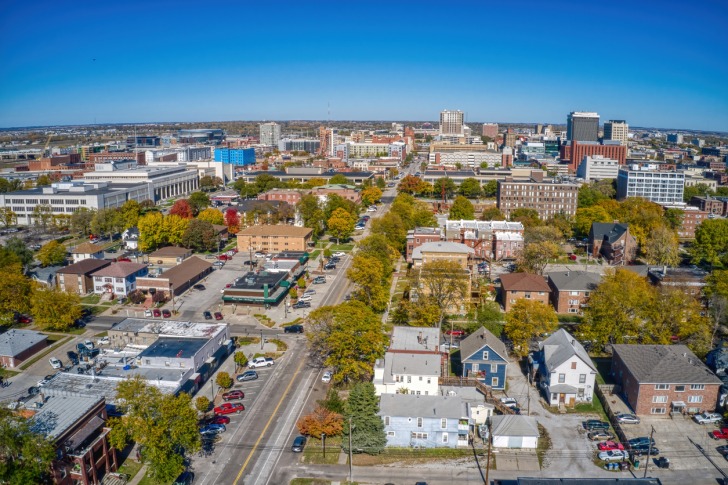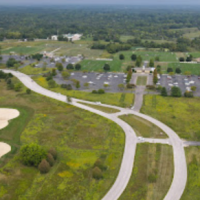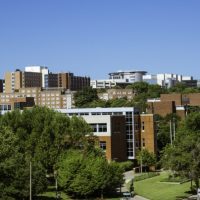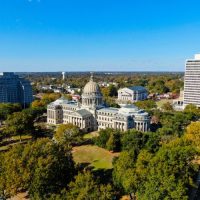Several national publications include Lincoln in lists of the best places to live in America.
It has the University of Nebraska and is the state capital.
There are advantages to having either one and having both is an added bonus.
The cost of living is relatively low, crime is low, and the weather is not too bad.
It is subjective, and every place has its downside, but you may find the pros far outweigh the cons of Lincoln, Nebraska.
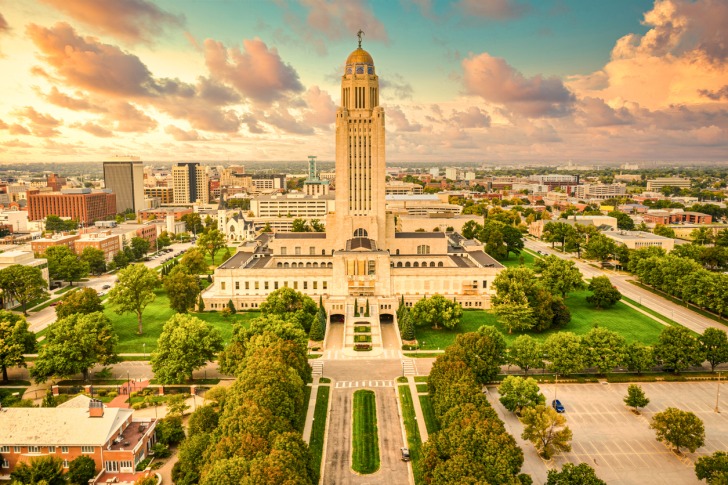
Contents
Pros of Living in Lincoln, Nebraska
1. Relatively Low Housing Costs
Houses cost about eight percent less than the national average.
Prices have been going up in recent years, so it may be a good time to invest in a house there.
The median price for a home in Nebraska is $349,000.
Nationally the median price is $363,000.
It is higher than the state average, however.
The average rent for a family-sized apartment in Lincoln is $1,217.
The national average is $1700.
Rental prices have been going down in recent years.
2. Lower Cost of Living
The cost of living in Lincoln is lower than the national average, but a bit higher than the state average.
While housing is a major expense, the cost of living also includes things like food, utilities, transportation, healthcare, and entertainment.
The overall cost of living is eight percent below the national average, and one percent above the state average.
Healthcare is a little more expensive than the national average, but all other categories are below the average.
3. Quality of Life
Lincoln gets high marks for overall quality of life too.
The cost of living is low, and income is average or above, so if you have a good job, you can live comfortably.
There are dozens of parks, and hundreds of miles of trails around for hiking, biking, and horseback riding.
Being a university town provides a lot of exciting sports events to see, and the community spirit is fun to enjoy and participate in.
There is a good transportation system available to get you where you want to go.
4. Lots of Jobs
In 2015 Lincoln was rated as the number-one city in America for job prospects.
It may not be that high now, but there are still plenty of jobs available.
The unemployment rate was about one percent then, and is about two percent now, still below the national average.
Nebraska has the fourth-lowest unemployment rate in the nation, and Lincoln follows suit.
Combine that with a lower cost of living, and Lincoln becomes a very desirable place to live.
Job growth is expected to be at or slightly above the national average in the coming years.
5. Easy to Get Around
Lincoln has 134 miles of trails inside the city limits, which allows you to get around town without getting on the streets.
The streets are laid out in a logical grid, so it is easy to find your way around if you know basic directions.
There is a sound public transportation system that is efficient and not expensive.
Most people have cars, but it is not overly congested, and commute times are usually short.
The city also provides a map of bike routes, using both trails and bike lanes inside the city.
6. Cultural Activities
The city has two major historical areas, the original city square called the Hay Market, and the historic Railyard.
There are lots of art galleries, live music venues, a large theater scene, and many small privately owned restaurants.
There is always something to enjoy, and it’s fairly easy to get involved in any type of artistic expression.
The University of Nebraska adds even more of a high-energy atmosphere that is fun to be around.
7. Great Food Culture
Nebraska is famous for its corn and for its steaks.
Most connoisseurs agree that corn-fed beef makes the best steaks, so the combination is natural here.
Steaks are also cheaper here because of the beef industry, so that makes it even better.
The great food does not stop there, however.
The Runza is a unique local favorite, a bread pocket filled with beef, cabbage, and seasonings.
There are a lot of European, as well as Native American influxes on the food here.
8. The State Capital
Living in a state capital usually results in a higher satisfaction level in general, so Lincoln offers that advantage.
Lincoln also has a rather unique capital building that is fun to visit.
The state capital broadens one’s horizons by exposing people to new ideas and even other cultures.
It is a center of history and culture that you do not have in other cities.
Cons of Living in Lincoln, Nebraska
1. Fairly High Crime Rate
With the high quality of life, it is a bit surprising that Lincoln has a high crime rate.
Some of that may be due to it being a major college town.
The violent crime rate is 4.3 per 1,000 people.
The national average is 4.0 and the state average is 3.1.
Lincoln is below the national average on many crimes, but it is well above the national average when it comes to rape, where it is nearly twice the national average.
Property crimes are also higher than the national average, at 28.6 per thousand, as opposed to the national average of 19.
2. Higher Taxes
While Lincoln has a lower cost of living, and a high quality of life, it also has higher taxes than many places.
The state taxes social security and other retirement income.
Property taxes are higher than in other states, and business taxes are high.
Sales tax is at 7.25 percent, which is average, but is just part of the overall burden.
Nebraska is not considered a tax-friendly state and is not rated highly for retirement.
3. Healthcare
People in Nebraska are generally healthy, but healthcare is lacking, especially for those at the bottom of the economic spectrum.
A study recently showed that most hospitals in the area operate at a loss.
Per capita, healthcare costs are close to the national average, but out-of-pocket expenses are among the highest in the nation for healthcare.
There are 30 hospitals in Lincoln, and some are rated very high.
The problem seems to be getting that healthcare to the people who need it most.
4. Harsh Winter
Lincoln has pleasant temperatures most of the year and four seasons.
Its winters can be quite harsh.
There is usually only six or seven inches of snow each winter, but the problem is cold temperatures and wind.
It gets a lot of wind, and there can be days of wind chills of 20 below zero.
The greater danger than snow is an ice storm, which covers everything with ice and makes travel treacherous.
Winters can be long and there are a lot of days with gray skies.
5. Some Poverty
The number of people living in poverty in Lincoln is just above 13 percent, which is a little above the national average.
That means about 35,000 people are considered poor.
There are a lot of jobs available, but many of them are low-paying service industry jobs.
Many people below the poverty line have full-time jobs.
The number of people in poverty is concentrated in the northwest part of the city, where the rate may be even higher.
There are not a significant number of homeless people, however.
6. Danger of Tornadoes
Lincoln gets tornadoes at times in summer, which can be deadly and cause tremendous amounts of damage.
This is typical of the Midwest where the land is flat.
There is a slight danger of flooding, but the city does not seem susceptible to other types of natural disasters.
Tornadoes are the biggest concern, and some have come close to the city over the years.
Lincoln has aerated 1.4 tornadoes per year since 1950.
7. Lack of Diversity
Even with a major university in town, there is not a lot of diversity.
Lincoln is about 84 percent white, which is about the same as the rest of the state.
There are a lot of people of German and European descent, and that culture dominates the area.
This could also be the reason a lot of people are conservative in their values.
Even though Lincoln is a rather large city, it has not embraced the liberal values that many large cities do.
8. Small Town Mentality
It is hard to imagine a city of 300,000 people as a small town, but Lincoln was once a small university town.
That small-town mentality persists in many ways, and some people still call it a small town with a lot of people.
Small towns have their appeal, but they also have a downside.
They tend to be insular, and not as open to new people, and it is harder to establish meaningful connections.
People are often resistant to change as well.
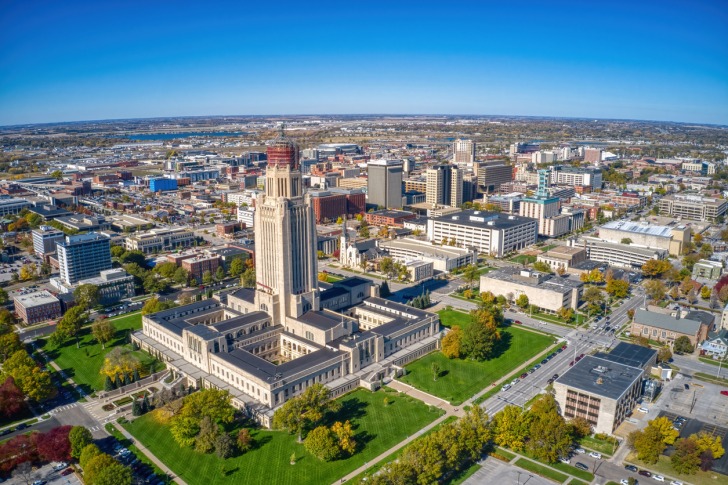
Pros and Cons of Living in Lincoln, Nebraska – Summary Table
| Pros of Living in Lincoln, Nebraska | Cons of Living in Lincoln, Nebraska |
|---|---|
| 1. Relatively Low Housing Costs | 1. Fairly High Crime Rate |
| 2. Lower Cost of Living | 2. Higher Taxes |
| 3. Quality of Life | 3. Healthcare |
| 4. Lots of Jobs | 4. Harsh Winter |
| 5. Easy to Get Around | 5. Some Poverty |
| 6. Cultural Activities | 6. Danger of Tornadoes |
| 7. Great Food Culture | 7. Lack of Diversity |
| 8. The State Capital | 8. Small Town Mentality |
Lincoln Safety Overview
READ THE FULL REPORT: Lincoln Safety Review
Safety Index: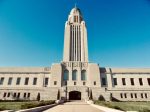
- OVERALL RISK: HIGH
- TRANSPORT & TAXIS RISK: MEDIUM
- PICKPOCKETS RISK: LOW
- NATURAL DISASTERS RISK: LOW
- MUGGING RISK: LOW
- TERRORISM RISK: LOW
- SCAMS RISK: MEDIUM
- WOMEN TRAVELERS RISK: LOW
Frequently Asked Questions
How did the city of Lincoln get started?
Nebraska became a state in 1867.
The state capital commission chose the town of Lancaster, which had 40 people, to be the state capital.
It was renamed Lincoln in 1869.
How many people live in Lincoln?
Lincoln has about 300,000 people.
It has grown steadily over the years.
Like many cities, its greatest growth was in the first few decades.
Lincoln has grown by about 14 percent per decade since 1970.
It grew by 30 percent in the 1960s.
Where are the most jobs in Lincoln?
Since there is a university, and state capital in the city, education and governmental-type work are the most common jobs available.
Some of these are very well-paying jobs.
Corn and cattle are the major industries in the state, and Lincoln is involved in many aspects of both.
Why is Lincoln bad for allergy sufferers?
Flat land in the Midwest makes it easy for allergens to stay in the air for a longer period of time.
The pollen count is generally high in Lincoln from late February through October, which is more than half the year.
Nebraska is not the worst state for allergies, but it is bad enough to cause difficulty for people who have allergies and asthma.
What is Lincoln's relationship with refugees?
In the 1970s Lincoln was named a refugee-friendly city by the federal government.
By the year 2000, Lincoln was the 12th largest resettlement site in the United States.
In 2018, Lincoln had 3,000 students who were refugees and spoke 150 different languages.
Even with that, the city is not considered to be particularly diverse.
